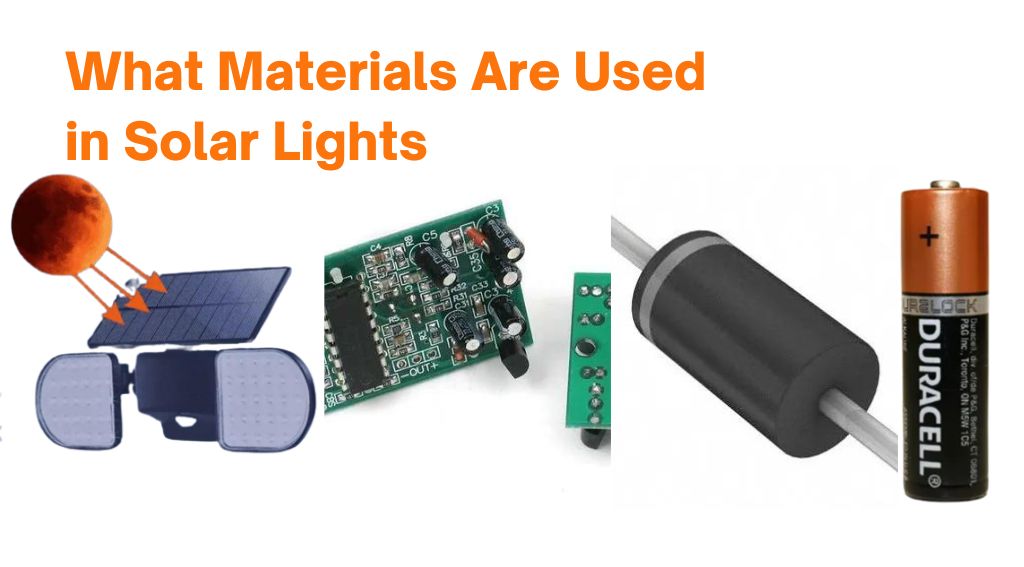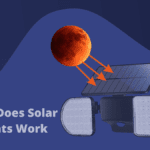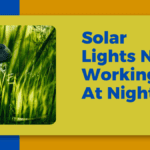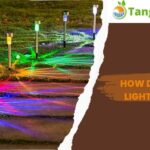How Do Solar Powered Lights Work? Tangible Solar
How do solar powered lights work? Ordinary lights are identical to solar ones; the only distinction is that solar lights don’t require expensive machinery or hard cables to generate energy from the sun.
Simply placing them in a sunny area will do the trick. They’ll automatically start charging during the day and switch on at night to light up your house.
We’ll examine solar lights more closely in this post to see how they operate and why they’re a terrific option for eco-friendly illumination. How To Fix Outdoor Solar Lights That Stop Working
So without further ado, let’s get to the key parts of solar lights.
How do solar powered lights work?
The photovoltaic effect is what makes solar lights function. When it gets dark, a photoreceptor on the lamp senses it and activates the light, which is often made up of many light-emitting diodes (LEDs). Following that, the battery powers the light all night long.
What is solar energy?
Solar power is the process of directly or indirectly transforming the renewable energy of sunlight into electricity. While concentrated solar power systems are employed in the indirect conversion, photovoltaic (PV) cells are used in the direct conversion. In the following sections, you will learn how do solar powered lights work. (Read: What Would Take Place If There Was No Sunlight?)
What are solar lights, and what materials do they contain?
The batteries in solar lights, which receive their energy from sunlight, power the lights. A solar lamp is composed of:
- Battery
- control circuits or electronics.
- a light source, and
- A solar-powered panel
What Materials Are Used in Solar Lights?

Solar cells (Photovoltaic Cells)
This is the most crucial component of solar lighting because it uses the photovoltaic effect to transform sunlight into electrical energy.
In layman’s terms, sunlight excites atoms, causing them to gain and lose electrons. As a result, an electron flow, or electricity, takes place.
Battery Chargers
The operation of the batteries in solar lights doesn’t need to be explained in detail; after all, they are just batteries.
There isn’t much more to say about solar lights since they have rechargeable batteries to store the energy they produce throughout the day.
Diode
This part makes sure that electricity only moves from the solar panel to the lightbulb in one direction.
It is necessary because, without it, energy would be squandered since it would alternately flow between the solar panel and the light bulb.
Photoresistor
On the top of the solar panels of solar lights are photoresistors, which serve as a gate between the battery and the LEDs.
The way they operate is really simple; they are just sensors that adjust their resistance in response to the amount of light they receive.
They can therefore be used to foretell whether sunlight will be present or not.
The resistance of the photoresistor lowers when it is exposed to light (during the day), allowing the solar panel to replenish the battery.
The photoresistor resistance will rise in the absence of light, allowing current to flow from the battery to the LEDs.
Luminous Sensors (Optional)
Some solar lights may contain multiple light sensors in addition to the photoresistor, including:
This sensor regulates how pitch-black the area must be for the light to turn on. In other words, it may be readily adjusted to your desired settings because it detects the strength of the light.
This sensor, which is commonly used in solar security and motion-detecting lights, primarily detects heat. Without going into too much technical detail, this sensor will turn on the light when it senses a person nearby, and its sensitivity settings may be changed.
Luminescent diodes (LEDs)
The LEDs mark the end of our trek to the solar lights’ core. Don’t be alarmed; they aren’t merely glistening white orbs.
There are a variety of lovely hues, light sources, and intensities that will work well for all of your decorating needs.
They are the most widely used light bulbs in solar lights since they are also very energy-efficient and have a long lifespan.
FAQs: How Do Solar Powered Lights Work?
1. What is the required charging time for solar lights?
Solar lights typically require between 4 and 10 hours of sunlight to fully recharge if the battery is empty. Lights installed in the morning will probably operate that night if they are situated in an area with full exposure.
2. Are batteries necessary for solar lights to operate?
The batteries release this energy at night when there isn’t any light, which enables solar lights to turn on automatically. Solar lights wouldn’t be able to function without batteries because they can’t store solar energy, which means they would only be usable during the daytime when the sun is shining.
3. Where do solar lights obtain their power from?
Solar energy is produced during the day using solar panels. When light photons strike a solar cell, they dislodge electrons from the silicon atoms that make up the cell’s crystal structure, causing this to occur. Our charge/load controller uses the solar panel system’s energy to charge the battery.
4. When off, can solar lights still charge?
For 72 hours, turn off the light and let it charge. Many solar-powered lights will continue to charge even if they are not in use;, by leaving the lights off, you are allowing the battery to fully charge over several days of sunlight.
5. Solar lights’ lifespan is how long?
How long are solar lights supposed to last? In general, it takes roughly 3–4 years for the batteries in outdoor solar lights to need to be replaced. LEDs can last for ten years or longer on their own.
6. Can I put solar lanterns outside in the winter?
Solar lights may be left outside throughout the winter. Since the majority of well-made solar lights are shielded from rain and freezing temperatures, you may leave them out all winter. Nevertheless, if you reside in an area where it frequently rains in the winter, you should only use solar lights with an IP65 rating.
7. Is it possible to use solar lights on trees?
Shade In the sun or the shade, solar lights function. In addition to other uses, they can be utilized as solar lights for gardens, patios, pathways, and more. These solar-powered outdoor lights can be positioned in gloomy areas or beneath trees. Shade Different degrees of shadow, or light coverage, are appropriate for solar lighting.
8. How do outdoor solar lights get their energy?
Solar light charging procedures are straightforward. Put your new solar light in a bright spot away from direct sunlight once it has been fitted, and then leave it there to charge. The item will turn on at night without the need for a power source or battery backup, which will let you know it is completely charged.
9. Is it safe to leave solar lights outside in the rain?
The majority of solar lights are waterproof, but not all of them can withstand a lot of moisture, and not all of them work well in overcast conditions. You may keep solar lights out in the rain because they are waterproof and water-resistant.
Conclusion
As promised, we gave you a thorough explanation of solar lights’ operation and construction.
We sincerely hope you liked reading this post, and be sure to check back often for more great solar-related advice from Solar Energy Hackers.
Do you find this manual useful? Do you have any queries or suggestions about how solar powered lights work?




